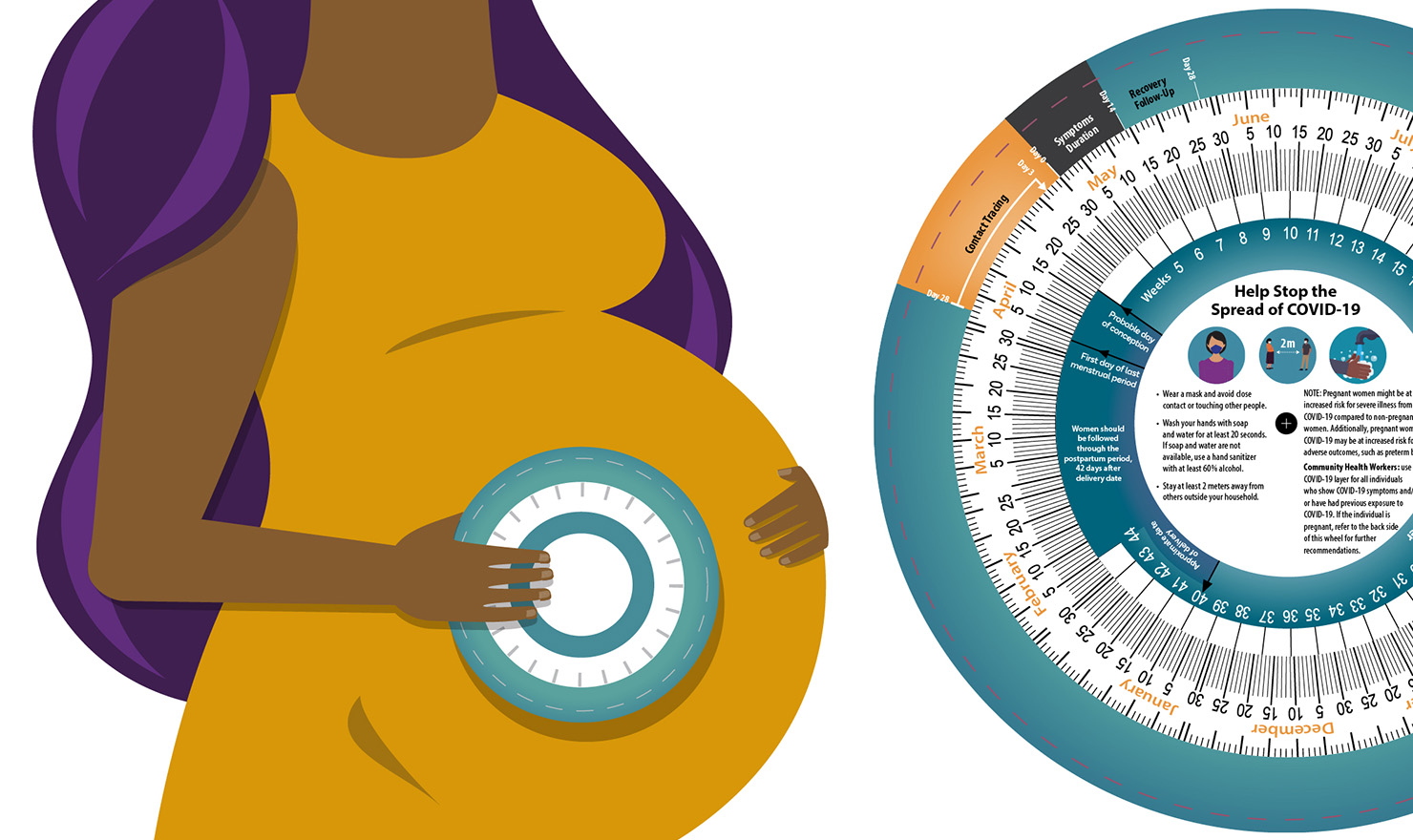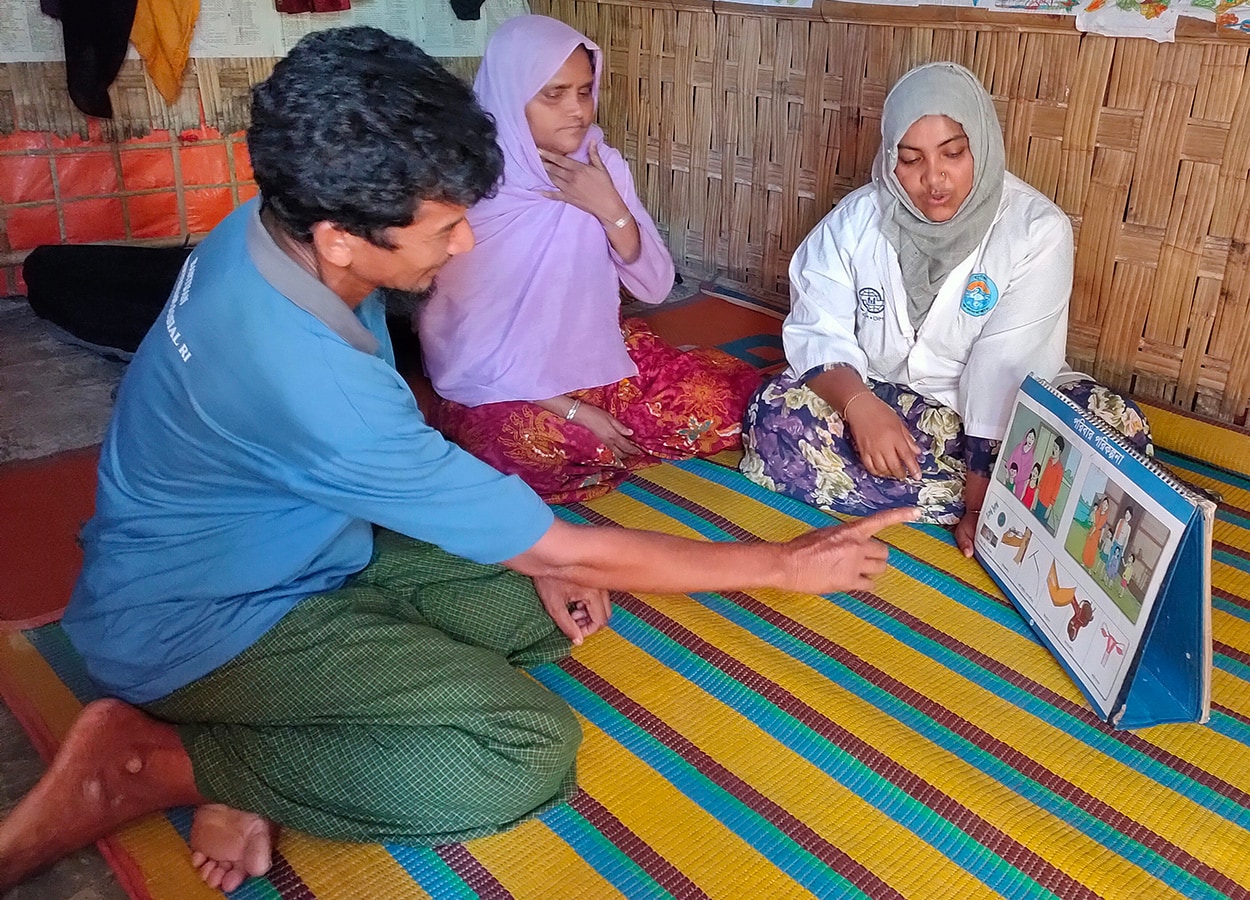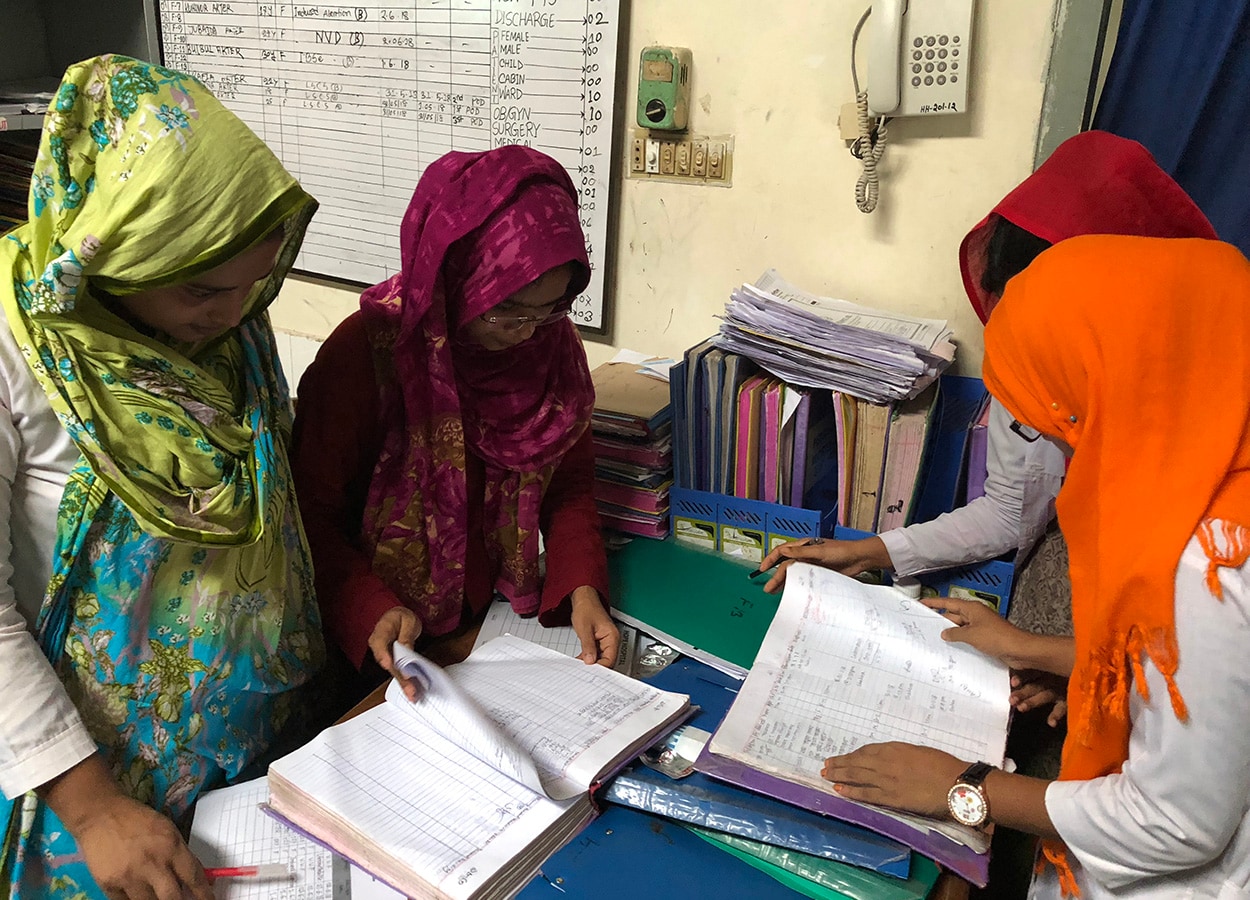Pregnancy Wheel Adaptations Empower Community Health Workers
December 8, 2020

A pregnant woman and the adapted pregnancy wheel, which includes COVID-19 prevention messages to help Community Health Workers (CHWs).
For more than seven decades, Community Health Workers (CHWs) have served on the front lines of public health crises. CHWs are well-trained, usually have an in-depth understanding of their community’s culture and healthcare needs, and are often trusted members of the communities they serve. CHWs handle a range of functions and are valued as providers of health information and services who improve community health outcomes.
Much like the longstanding history and value of community health workers, the pregnancy wheel — a pocket-sized plastic device used to estimate key gestation dates — is an accepted public health tool which has long helped healthcare providers ensure better maternal and child health outcomes. In countries such as Bangladesh, however, the pregnancy wheel is not yet widely known among community health workers. This training has given CHWs the confidence to effectively explain key messages about preparing for birth and being ready for complications. CHWs in Bangladesh can now better advise families on preparing to deliver during emergencies — an important aspect of health service delivery in humanitarian settings.
Because COVID-19 is a new illness, CHWs around the world have been dealing with an overabundance of information that changes rapidly. Mixed messaging, along with shifting priorities in humanitarian maternal and child health needs, can create confusion for CHWs as well as strain community relationships. Therefore, CHWs need streamlined, accurate prevention messaging and tools to deliver pregnancy information in local communities in the context of COVID-19.
Adapting the Wheel to Expand Reach

In 2019, before the COVID-19 pandemic, expectant parents receiving prenatal care counseling at home in Cox's Bazar, Bangladesh, where community-delivered services save lives. Photo: Endang Handzel
Facing new challenges with COVID-19, CDC and partners considered CHWs’ strengths and abilities to expand pregnancy services in unstable settings. As a result, CDC adapted the pregnancy wheel at the beginning of the COVID-19 emergency response to include COVID-19 prevention messages. The goal of the adapted wheel is to empower CHWs to spread awareness and improve decision-making for pregnant women. With this improvement, CHWs can provide COVID-19 community outreach and education while continuing to support healthy pregnancies.
Before the COVID-19 pandemic, the Inter-Agency Working Group for Sexual and Reproductive Health in Humanitarian Emergencies and Crises developed the ”Roadmap to Accelerate Progress for Every Newborn in Humanitarian Settings 2020-2024external icon.” Work on this strategy document was led by the World Health Organization (WHO), UNICEF, and other agencies including CDC, United Nations Children’s Fund, United Nations High Commissioner for Refugees, and Save The Children. Following the April 2020 launch, CDC worked to implement the Roadmap in Cox’s Bazar, Bangladesh, to improve the facility and community-based surveillance system using tools, including the pregnancy wheel.
The most recent adaptation to the pregnancy wheel includes COVID-19 messaging for the general population and pregnant women and provides risk-reducing triage recommendations for pregnant women with COVID-19 symptoms. The addition of a third, COVID-19 specific layer to the wheel allows CHWs to determine appropriate contact tracing periods and expected illness duration for individuals suspected to have COVID-19. These additional features help CHWs identify the start of symptoms in the community and align them with dates on the pregnancy wheel.
For example, CHWs may notice COVID-19 symptoms when examining pregnant women. Being aware of expected delivery dates, they can use the wheel to help providers pinpoint the virus’ incubation period. If COVID-19 is detected during an examination, CHWs can use the wheel, along with their strong community connections, to conduct contact tracing.
The CDC-adapted pregnancy wheel has been piloted in emergency settings, including with the Rohingya population in Bangladesh. It has reached approximately 500 health facilities and been used by more than 1,000 community health workers.
Pregnancy Wheel Adaptation Outlook and Future Use

Before COVID-19, midwives in Bangladesh completed data training, with the help of experts in maternal, newborn, and child health and healthcare providers, while preparing for community health work. Photo: Endang Handzel
As a result of CDC’s Cooperative Agreement with CARE International, the pilot for the latest version of the pregnancy wheel will begin before the end of 2020 and will be monitored across 1,500 village health teams in five districts in Uganda, reaching 29,000 pregnant women.
CDC is working to meet the increased demand for ongoing and thorough Maternal, Newborn, and Child Health, or MNCH services during the COVID-19 pandemic by sharing the adapted pregnancy wheel with countries like Burkina Faso, Chad, Cameroon, and Indonesia. CDC hopes that adaptations to the pregnancy wheel will help prevent premature deliveries, reduce maternal mortality and still births, empower a workforce, and strengthen surveillance. All together, these adaptations will ensure that mothers and newborns can receive lifesaving services in humanitarian settings as well as in countries with fragile health systems.